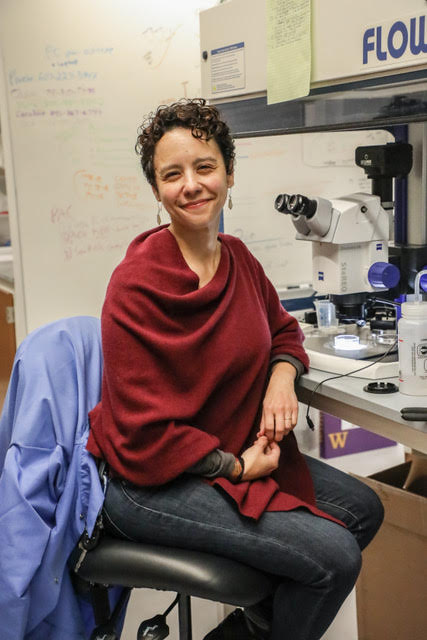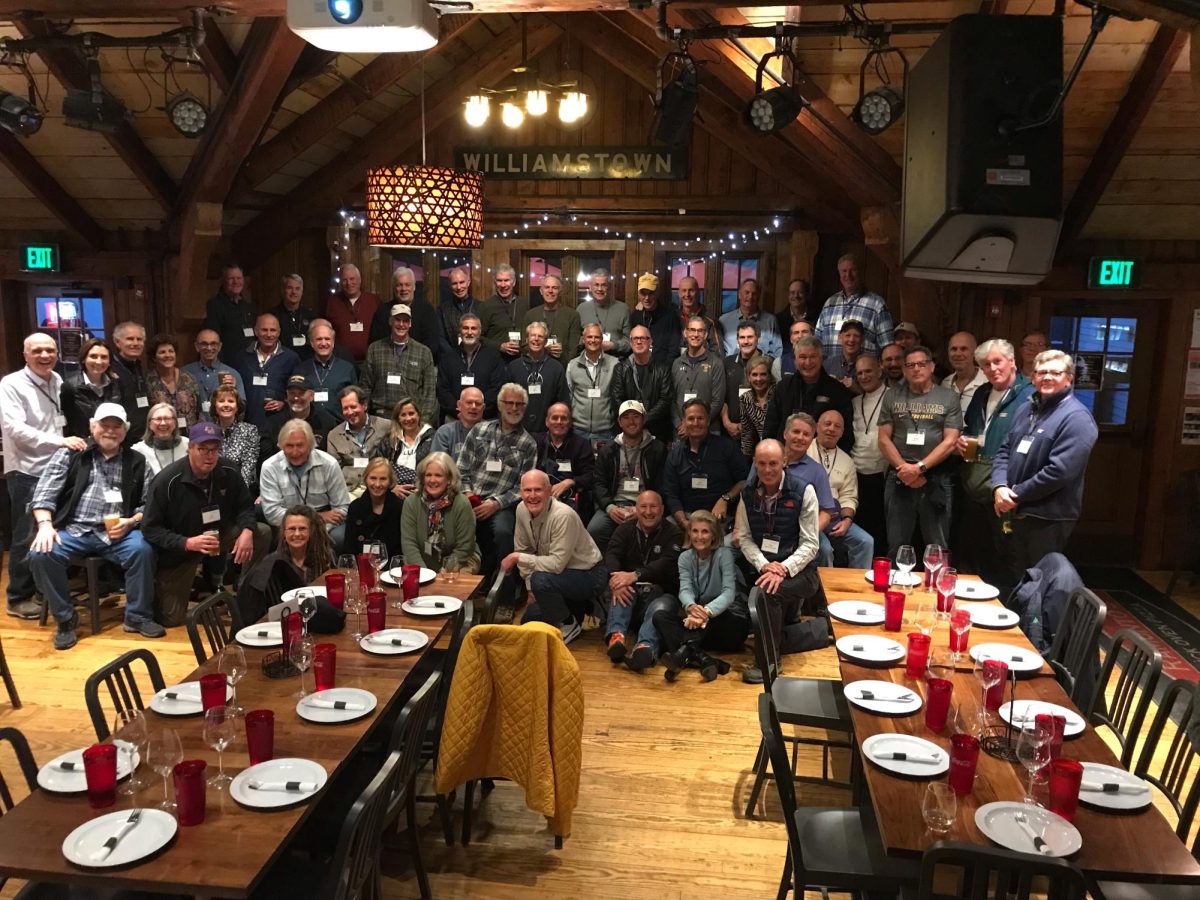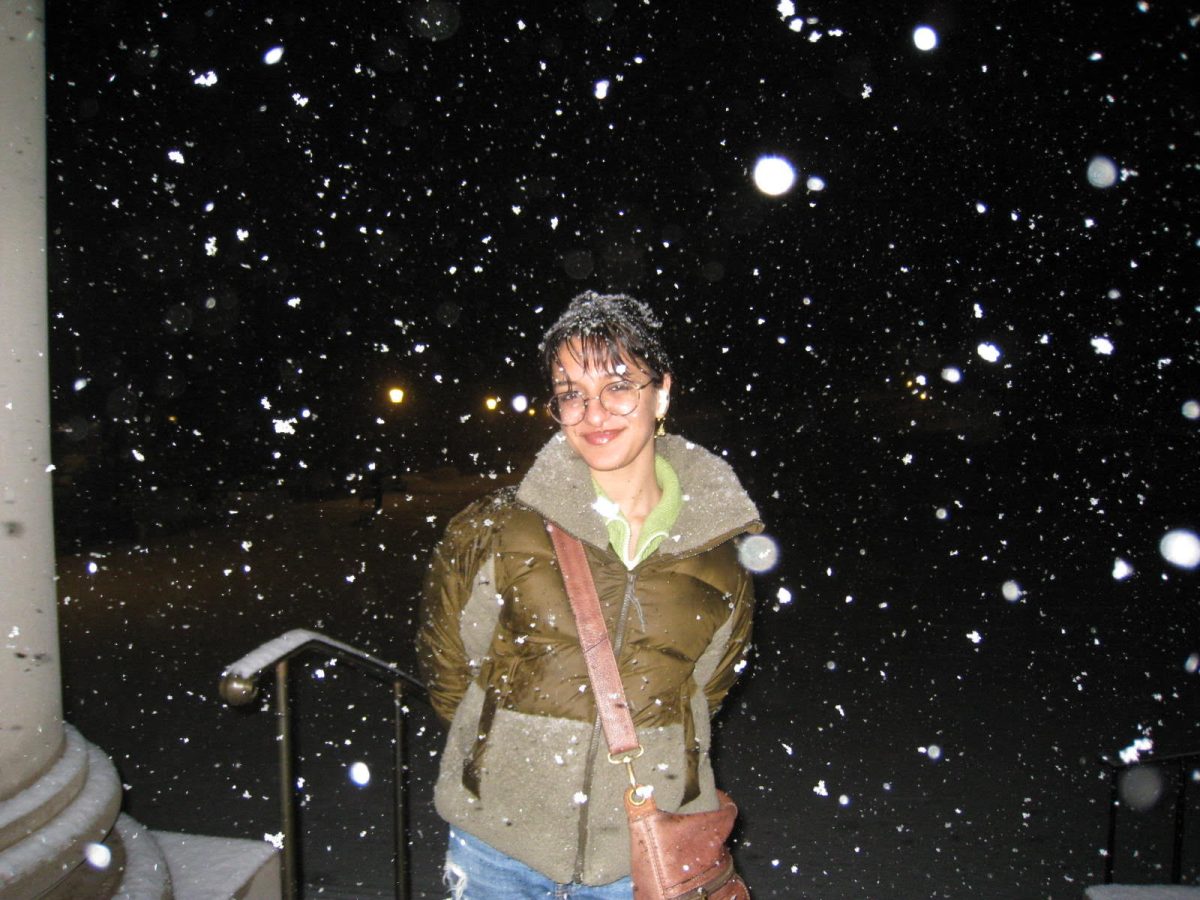
Cohen received a $79,585 grant last April for her research in geosciences.
How did life begin on Earth? Geoscientists have long used the theory of evolution to gain greater insight into the attributes of our planet’s earliest life. Yet, as new evidence in the field surfaces, those insights might change, and with it, our fundamental understanding of life’s origins.
Professor of Geosciences Phoebe Cohen, along with her partners at Syracuse University and University of California, Santa Barbara, is attempting to rewrite how the beginning of life has been taught and perceived by both scholars and the public at large. By carefully scrutinizing microscopic fossils, Cohen and her colleagues separate and collect traces of evidence that might offer clues as to how life interacted with the Earth before the emergence of animals.
Her research project, entitled “Using Organic Carbon Isotopes of Single Microfossils to Illuminate Proterozoic Eukaryotic Ecosystems,” was made possible by a grant from the National Science Foundation, which she received last April.
The purpose of that grant is basically to reconstruct where and how organisms [were] living before the evolution of animals,” Cohen said. “Animals have only been around [for] a small fraction of earth’s history, but non-animal life has been around for billions of years. So I’m curious [about] the period leading up to the evolution of animals and where single-celled eukaryotes [lived] back then.” A eukaryote is a cell with a membrane-enclosed nucleus; animals and plants are examples of eukaryotic life forms.
During the Proterozoic eon, the 2,000-million-year-long period before animals emerged, oxygen existed at the surface of oceans but not at greater depths. This knowledge led previous geoscientists to believe that Proterozoic life was only found in shallower, oxygenated waters.
“The assumption has always been that eukaryotes are restricted to those oxygen-rich ocean surfaces, but there’s some interesting research to suggest that might not be the case,” Cohen said.
Her own research further explores the question of whether single-celled organisms could have existed in deeper, oxygen-deprived waters by measuring stable carbon isotopes in microscopic fossils.
“What we are doing is basically dissolving those rocks in acid, and we extract single-celled eukaryotic fossils from them that are made of carbon that those organisms produced,” Cohen said. “We’d extract them, image them, and then … analyze the ratio of stable carbon isotopes in the individual fossils.”
Two types of carbon isotopes, carbon-12 and -13, are the key to unveiling the truth about how life started in the ocean. Obtaining data from fossils of microscopic single-celled organisms that lived hundreds of millions of years ago, however, is no easy feat.
“We’ve been refining a technique that allows us to measure the ratio of carbon-12 and carbon-13 in a single microfossil that is the tenth of the width of a human hair, which is very hard to do,” Cohen said. “We are comparing that ratio to the ratio of the rocks that the fossils are found in. By looking at those ratios, we can figure out whether the fossils were living in the surface water, which is oxygenated, or living deeper down in the water column, which would have little to no oxygen.”
Once completed, Cohen’s research could be groundbreaking for the entire field of geosciences. The technique of scrutinizing and extracting data from microscopic fossils is also a valuable discovery, as other geoscientists may now use this approach to answer other questions about Earth’s history.
Apart from collaborating with her colleagues through email and monthly Skype meetings, Cohen also had the assistance of her thesis student, Quinlan Byrne ’20. There was “heavy student involvement in all parts of the project,” Cohen said.
Cohen’s pedagogical teaching philosophy often combines research and lecture. “I always try to incorporate my research into my teaching, and of course I involve students in all my research, so there is no real divide between the classroom and the lab,” she said. “Teaching something is the best way to learn it yourself, so I’ve definitely grown a lot in terms of areas that I was weaker in when I got here by teaching those [areas] to students, and that’s wonderful.”
With climate change emerging as a core issue of the new decade, having a profound understanding of our planet is more crucial than ever, she said.
“Every part of our lives intersects with Earth sciences,” Cohen said. “The air we breathe, the minerals in our iPhones, the future of our planet, the food we eat and the landscape that we live on — all of it relates to how the earth system works. Not only in a liberal arts educational context but also [in] just being an informed citizen of the world, having at least a basic understanding of how the Earth works is a pretty fundamental way of thinking about the world and our place in it.”








